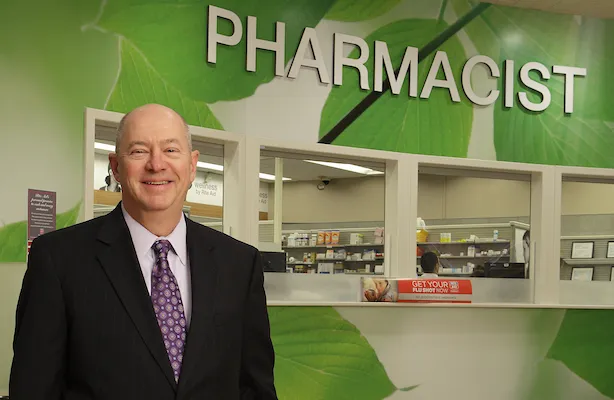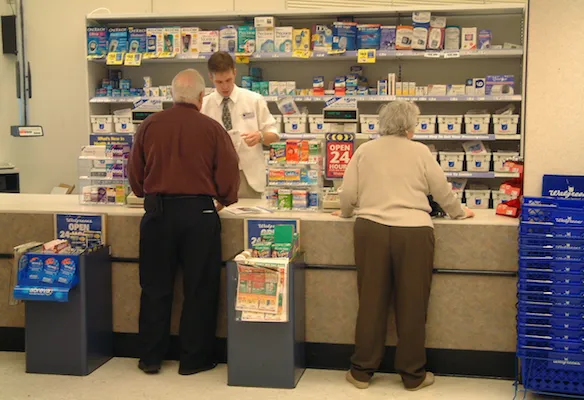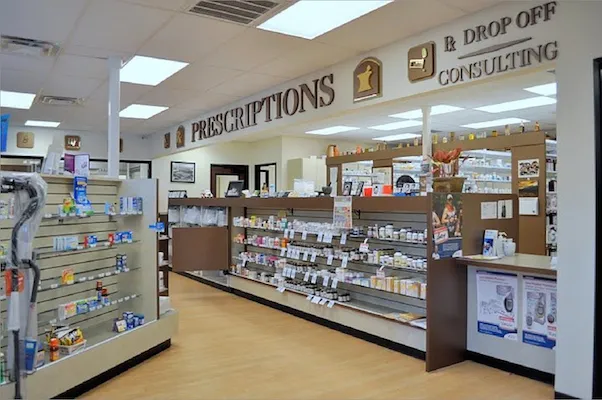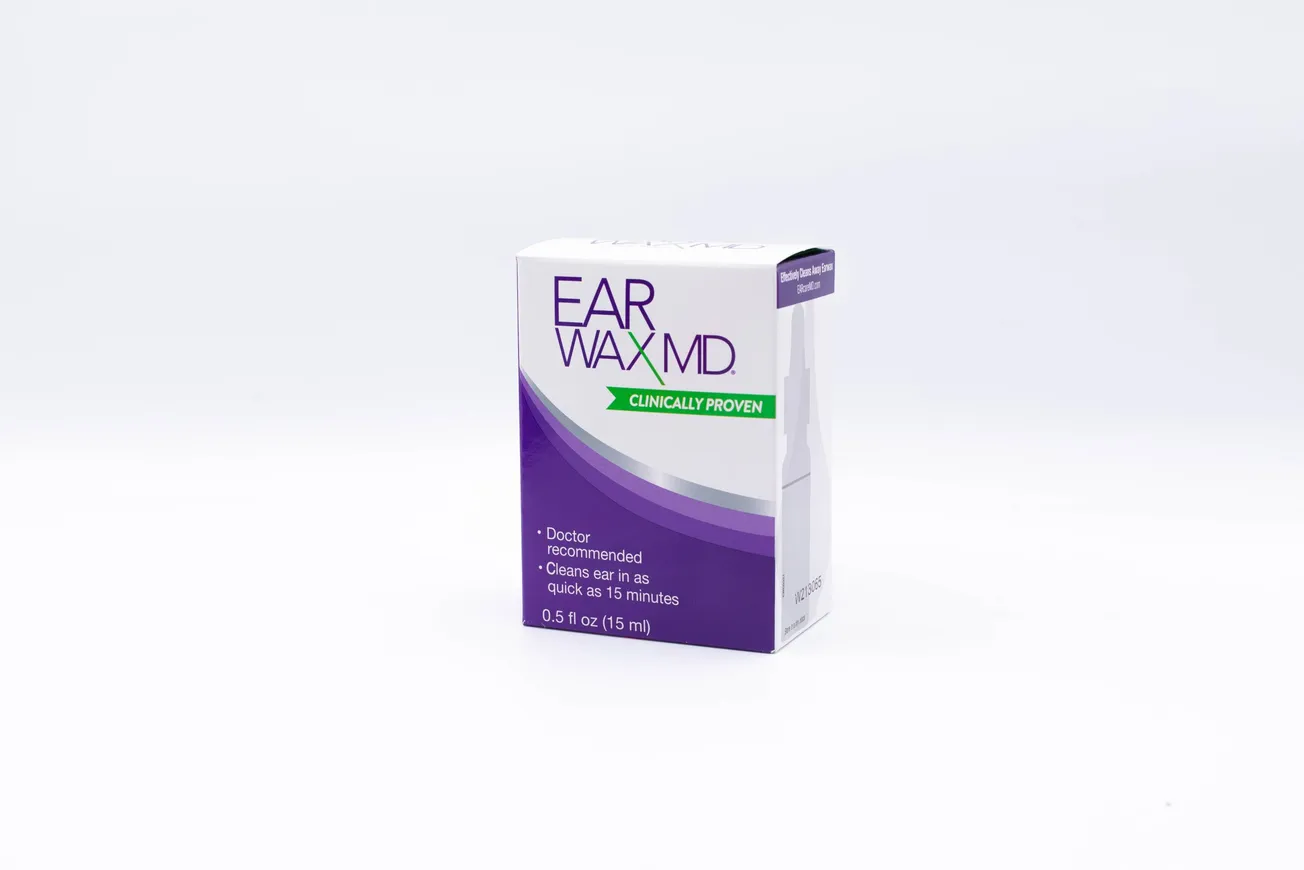There’s a changing of the guard in the top pharmacy executive position at Rite Aid.
Earlier this month, the company announced a flurry of executive appointments, including the promotion of Jocelyn Konrad to executive vice president of pharmacy. Konrad, who was group vice president of pharmacy services, takes the reins from Robert Thompson, who is slated to retire on Sept. 18 after a 38-year career in pharmacy, including 11 years with Rite Aid.
Robert Thompson in a Rite Aid Wellness Store.
Thompson served at Rite Aid’s executive VP of pharmacy since the fall of 2009, when he was promoted from senior VP of pharmacy operations. He joined Rite Aid in 2004 as VP of pharmacy business development and has served in such management capacities as senior VP of operations for the Northeastern division and as manager of Rite Aid’s integration of the Brooks-Eckerd pharmacy operation.
More recently, Thompson — named Pharmacy Executive of the Year a couple of years ago by Chain Drug Review — has presided over the pharmacy side as Rite Aid has transformed and re-energized its business, which over the past several years has seen the introduction of the wellness+ rewards program, an expanded immunization offering, the rollout of the Wellness Store format and telehealth technology, and the inception of the Rite Aid Health Alliance and RediClinic walk-in health clinics in its stores.
His enthusiasm for the pharmacist’s growing health care role has been evident as Rite Aid has moved forward with its strategy of becoming a retail health care company.
“This is exciting,” Thompson said in an interview at the launch of Rite Aid’s first in-store RediClinics this past February. “As health care changes in our country and consumers bear more of the cost of their health care, they’re going to be seeking more affordable options like this. And it’s not just the convenience aspect but also, ‘Where can I get the highest-quality care for the most reasonable price?’ We think that we are providing consumers with a really affordable option where they can get high-quality care. We think the time has come for this model for Rite Aid. We’re excited about it, and our customers are excited about it.”
Jocelyn Konrad
He’s also been bullish about the Rite Aid Health Alliance, in which the chain’s pharmacists work with physicians and health coaches as part of a care team to help patients with chronic and polychronic conditions better manage their health.
“The response from the physicians is excellent. They like the fact that their patients are having a great experience,” Thompson said at an event last summer marking Rite Aid’s Health Alliance partnership with the Heritage Provider Network. “The other thing is that our pharmacists really feel they’re able to improve the health of their patients. They’re excited about being able to focus some of their time and energy on changing how care is delivered. They understand the importance of this program in helping to improve their patients’ quality of life.”
He continued, “We have a vision about what we think our role as retailers and as community pharmacists should be. And we think this program is clear evidence that we’re on the right track. We’re leveraging the skill set and education of the pharmacist to focus on chronic and polychronic disease management, which is where all the costs are. We’re changing the format of our stores to be more health- and wellness-oriented. We are adding new services like care coaches and working in communities with physicians to deliver better care. We’ll be adding clinics to have an additional level of services for patients who need it. And we want all of it to be collaborative. So we think that by blending all of these services we’re truly fulfilling our vision for our stores to be a destination for health and wellness services and products.
“What we’ve been telling our pharmacists is that we’re a pharmacy-centric company, and pharmacists are at the center of everything that we do. And I think the pharmacists are loving it,” Thompson added. “They see the innovation as a dynamic shift in delivering improved care, and they have a chief role in it.”
Konrad also has been in the thick of this pharmacy evolution. A pharmacist by trade, with more than 20 years of experience in the field, she started at Rite Aid 2007, joining the company as a pharmacy district manager with the acquisition of the Brooks-Eckerd stores. In 2011, Konrad was promoted to regional pharmacy VP, and the next year she was named VP of health care initiatives. She was promoted to group VP of pharmacy services late last year.
“As a pharmacist and a field leader, my focus in the early days was primarily on delivering great customer service and ensuring the safe dispensing of medications,” Konrad said in a recent interview. “But the evolution of pharmacy over the past six years has brought me closer to the clinical services side, because that truly is the future of pharmacy. Our pharmacists will continue to play a more important role in the health and wellness of our patients and the entire health care system.”
Konrad noted that each phase of her career has helped her better understand the importance of the pharmacist’s role. “The reason I became a pharmacist was to help and support patients to live healthier lives. That in and of itself is at my core, and I’m extremely passionate about the responsibility pharmacists have in the communities they serve,” she said. “The evolution of pharmacy that I’ve experienced in each of my roles has helped me prepare for the exciting future that is ahead of us.”









